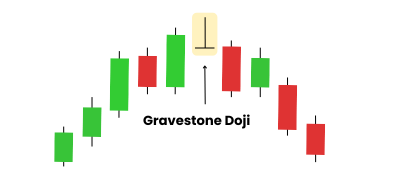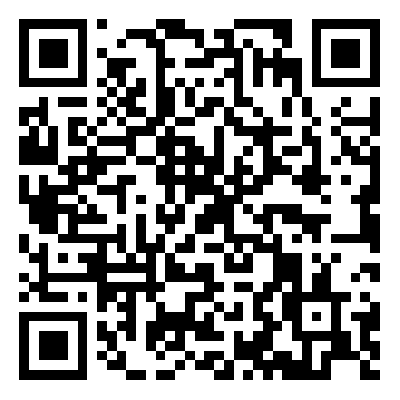Important Information
This website is managed by Ultima Markets’ international entities, and it’s important to emphasise that they are not subject to regulation by the FCA in the UK. Therefore, you must understand that you will not have the FCA’s protection when investing through this website – for example:
- You will not be guaranteed Negative Balance Protection
- You will not be protected by FCA’s leverage restrictions
- You will not have the right to settle disputes via the Financial Ombudsman Service (FOS)
- You will not be protected by Financial Services Compensation Scheme (FSCS)
- Any monies deposited will not be afforded the protection required under the FCA Client Assets Sourcebook. The level of protection for your funds will be determined by the regulations of the relevant local regulator.
Note: Ultima Markets is currently developing a dedicated website for UK clients and expects to onboard UK clients under FCA regulations in 2026.
If you would like to proceed and visit this website, you acknowledge and confirm the following:
- 1.The website is owned by Ultima Markets’ international entities and not by Ultima Markets UK Ltd, which is regulated by the FCA.
- 2.Ultima Markets Limited, or any of the Ultima Markets international entities, are neither based in the UK nor licensed by the FCA.
- 3.You are accessing the website at your own initiative and have not been solicited by Ultima Markets Limited in any way.
- 4.Investing through this website does not grant you the protections provided by the FCA.
- 5.Should you choose to invest through this website or with any of the international Ultima Markets entities, you will be subject to the rules and regulations of the relevant international regulatory authorities, not the FCA.
Ultima Markets wants to make it clear that we are duly licensed and authorised to offer the services and financial derivative products listed on our website. Individuals accessing this website and registering a trading account do so entirely of their own volition and without prior solicitation.
By confirming your decision to proceed with entering the website, you hereby affirm that this decision was solely initiated by you, and no solicitation has been made by any Ultima Markets entity.
I confirm my intention to proceed and enter this websiteBest Time to Buy JPY? 2025 Yen Rate Trends & Exchange Tips
Amid heightened JPY volatility in 2025, Taiwanese interest in JPY exchange has surged. Whether for travel, study abroad, or portfolio diversification, accessing real-time rate data and strategic exchange methods is critical for financial efficiency optimization. This analysis deciphers 2025 JPY trends, exchange channels, and investment tactics to empower informed JPY exchange decisions.
Why Monitor JPY Exchange Rates?
Japanese Yen Overview
The Japanese Yen (currency code: JPY), issued by the Bank of Japan (BOJ), serves as Japan’s official currency. Banknotes circulate in denominations of 1,000, 2,000, 5,000, and 10,000 yen, with coins issued as 1, 5, 10, 50, 100, and 500 yen. Ranked third globally in trading volume after the USD and EUR, the yen remains Asia’s most pivotal foreign exchange currency.
Why Do Taiwanese People Love Exchanging Japanese Yen?
- Top Travel Destination: Japan remains the top choice for Taiwanese travelers, with popular activities ranging from skiing in Hokkaido and shopping in Tokyo to autumn leaf viewing in Kansai and hot spring retreats in Kyushu.
- Affordable Spending, Great Value: With the yen’s depreciation, travel expenses in Japan are relatively low. Many Taiwanese take advantage of favorable exchange rates to stock up on yen in advance for their next trip.
- Long-Term Asset Allocation: Beyond travel, more families are using yen as part of long-term financial planning—for example, preparing for children’s future studies abroad, buying property in Japan, or retirement planning.
- Relatively Stable Currency Trend: Despite hitting lows starting in 2024, the Japanese yen remains one of the globally recognized safe-haven currencies.
2025 JPY Exchange Rate Review and Analysis
Recently, the Japanese yen has been trading between 0.23 and 0.24, showing signs of stabilization compared to early 2025. The JPY/USD exchange rate has fluctuated from a low of 0.0063 in January to a high of 0.0071 in April, indicating a mild appreciation trend year-to-date.


The exchange rate trend of the Japanese Yen (JPY) against the New Taiwan Dollar (TWD) shows that over the past 90 days, the JPY/TWD rate reached a high of 0.2304, a low of 0.2095, with an average rate of 0.2203. The volatility of the Japanese Yen against the New Taiwan Dollar was 7.96.
Additionally, on April 24, 2025, Japan’s Finance Minister, Katsunobu Kato, met with US Treasury Secretary, Scott Besant, in Washington to discuss issues such as exchange rates related to US tariffs. This meeting took place against the backdrop of US President Donald Trump returning to the White House and criticizing Japan’s weak yen policy, urging Japan to strengthen the yen to reduce the US trade deficit.
These factors have caused fluctuations in the yen during the first half of 2025, but overall, it remains at a relatively low level. For Taiwanese individuals considering “exchanging to Japanese yen,” this is a moment worth paying attention to.
Main Factors Affecting Exchange Rate Volatility
- Bank of Japan Policy: At the beginning of 2025, the Bank of Japan raised its policy interest rate to 0.5%, ending a long period of negative interest rates. It also planned to gradually reduce government bond purchases, further advancing monetary policy normalization.
- Federal Reserve Policy: The US Federal Reserve maintained a hawkish stance, implementing only moderate easing measures, which exerted pressure on the Japanese Yen.
- Global Trade Dynamics: The easing of US-China trade tensions improved market risk sentiment, reducing the demand for the Japanese Yen as a safe-haven currency.
Three Mainstream Methods for Exchanging Japanese Yen
1. Bank Exchange (Physical + Online)
- Comparison of Exchange Rates Across Banks: For example, in April 2025, banks such as Bank of Taiwan, SinoPac Bank, and E.SUN Bank offered slightly different JPY exchange rates. It is recommended to compare rates for better deals.
- Lower Fees via Online Banking and Mobile Apps: For instance, E.SUN Bank’s e-Exchange service offers discounted fees as low as 0.1.
- Exchange Rate Notification Service: You can set alerts to notify you when the exchange rate drops below a certain value, helping you seize the best timing for currency exchange.
2. Airport or Local Exchange in Japan
- Higher Rates and Fees at Taiwan Airports: It is advised to exchange only small amounts for emergency cash.
- Local Exchange in Japan: Some regions offer better rates, but safety and convenience should be considered.
3. Digital Currency Exchange Platforms (Wise, Revolut, SinoPac DAWHO, etc.)
- More Transparent Mid-Market Rates with Lower Fees: Ideal for users who frequently engage in foreign currency transactions.
- Support for JPY Account Transfers or ATM Withdrawals in Japan: Convenient for local use in Japan.
- New Tools in 2025: Integrated exchange and budgeting apps make it easier to manage foreign currency assets.
Pros and Cons PK of 5 Major Channels for Exchanging Japanese Yen
| Channel | Exchange Rate Advantage | Fees | Suitable Amount | Processing Speed | Security Risk |
| Bank Counter | ★★☆ | High | Small amounts | Slow | Low |
| Online Exchange | ★★★☆ | Medium | Moderate amounts | Fast | Medium |
| Forex ATMs | ★☆☆ | High | Emergency small amounts | Instant | Medium |
| Private Exchange Offices | ★★☆ | None | Large amounts | Instant | High |
| Forex Brokers | ★★★★☆ | Low spreads | Flexible amounts | Instant | Strictly regulated |
Is It a Good Time to Exchange Japanese Yen Now? When Is the Right Time?
From historical data, the Japanese Yen exchange rate has stabilized significantly, but it is still recommended for individuals to monitor market fluctuations. Avoid exchanging all your funds at once; instead, exchange smaller amounts of Yen to prevent losses if the Yen appreciates and the exchange rate worsens.
- Avoid short-term rebounds of the Yen and exchange in batches when the rate drops below 0.215: Based on the 2025 exchange rate trends, it is advisable to exchange Yen when the JPY to TWD rate dips.
- Use exchange rate alert tools: Apps like Ultima Markets or push notifications from major banks can help you track the best timing for currency exchange.
Example: If the exchange rate is 0.22, exchanging 100,000 JPY would cost 22,000 TWD. If the rate rises to 0.24, it would cost 24,000 TWD, resulting in a 2,000 TWD difference.
Extended Applications for Japanese Yen Investments
Many people, after “exchanging Japanese Yen,” tend to leave it in their bank accounts as foreign currency deposits or wait for the exchange rate to rebound before converting it back to TWD. However, this approach may lead to risks of exchange rate losses or low capital efficiency. In fact, there are smarter ways to make better use of your Japanese Yen:
Investing in Yen-Denominated Funds: Participating in Japan’s Economic Growth
As Japan’s economy gradually recovers, particularly in sectors like manufacturing, technology, and energy transformation, investing in yen-denominated Japanese funds has become an attractive option. Here are some standout yen-denominated funds (data as of March 2025):
| Fund Name | 1-Year Return | Investment Focus |
| Morgan Japan Fund (JPY) | +20.49% | Focuses on large Japanese manufacturing and export companies |
| Franklin Templeton Global Investment Series Japan Fund | +17.66% | Invests in Japanese industrial and consumer durables |
| BNP Paribas Japan Small Cap Equity Fund | +15.33% | Invests in companies with a market capitalization below 500 billion yen |
These funds primarily invest in Japan’s manufacturing, technology, and domestic consumption sectors, making them suitable for investors optimistic about Japan’s economic recovery
Flexible Management of Japanese Yen Currency Pairs: Amplify Profit Opportunities with Ultima Markets
If you wish to take a more active role in managing your yen assets, trading Japanese yen currency pairs through forex platforms like Ultima Markets is a great option.
- Trade JPY/NTD, JPY/USD, and other currency pairs: Whether the yen appreciates or depreciates, you can leverage long or short strategies to achieve potential profits.
- High leverage, low spreads: Ultima Markets offers leverage up to 1:2000 and ECN accounts with spreads as low as 0.0, catering to traders with high capital efficiency needs.
- Professional technical analysis support: Utilize Trading Central’s tools to identify entry and stop-loss points, enhancing your trading success rate.
- Free demo account for practice: Beginners can use the simulation funds provided by Ultima Markets to practice and build confidence before entering the market.
Suitable for: Those who wish to actively manage yen positions, possess some trading knowledge, or are eager to learn forex trading.
Smart Allocation Strategy Recommendations:
Looking for steady growth? Consider this allocation:
- 40% in Japanese Yen Savings (as short-term emergency funds)
- 40% in Yen-Denominated Funds (for mid-term asset appreciation)
- 20% in Yen Currency Pair Trading (to enhance capital flexibility)
By diversifying across different levels of allocation, you can maintain a long-term bullish position on the yen while also capturing opportunities in the short-term forex market.
Expert Insights: What Could Happen to the Yen After 2025?
As the global economic environment continues to evolve, the future trajectory of the yen remains uncertain. Here are some key factors to watch for long-term trends:
1. Bank of Japan (BOJ) Policy Direction
- The BOJ began gradually exiting its ultra-loose monetary policy at the end of 2024. Market expectations suggest further rate hikes in the second half of 2025.
- Rate hikes may strengthen the yen, but if the pace is too slow, it may not significantly boost its value in the short term.
2. US Economy and Interest Rate Policy
- The US-Japan interest rate differential remains a key driver of the yen-to-dollar exchange rate.
- If the Federal Reserve (Fed) starts cutting rates in the second half of 2025, narrowing the rate differential, it could support yen appreciation.
3. Japan’s Economic Recovery Momentum
- Japan’s improving consumer spending, manufacturing performance, and recovering tourism industry all contribute to increased demand for the yen.
- The 2025 Osaka Expo, in particular, is expected to attract foreign investments and tourism inflows, potentially supporting a yen rebound.

Conclusion and Recommendation: Starting from the second half of 2025, the Japanese yen may enter a phase of fluctuating recovery. For Taiwanese individuals, the current relatively low exchange rate still offers mid-term currency exchange and investment potential.
Conclusion
Whether you’re planning to travel to Japan, send your child to study abroad, or build a diversified asset allocation strategy, “exchanging yen” is no longer just about converting money into paper currency. It is an excellent opportunity to deeply understand Japan’s economy, global finance, and personal financial planning.
It is recommended that you choose the appropriate allocation method based on your personal needs and risk profile: short-term currency exchange can flexibly arrange travel expenses, while long-term investments can pursue higher potential returns through funds or forex trading. Choosing a platform like Ultima Markets, which offers secure regulation, ultra-low trading costs, and Chinese customer support, can further help you strategically navigate the global market.
Want to seize every opportunity in yen fluctuations? 👉 Open an Ultima Markets account now and start your journey with the yen toward a broader financial blueprint!
Disclaimer: This content is provided for informational purposes only and does not constitute, and should not be construed as, financial, investment, or other professional advice. No statement or opinion contained here in should be considered a recommendation by Ultima Markets or the author regarding any specific investment product, strategy, or transaction. Readers are advised not to rely solely on this material when making investment decisions and should seek independent advice where appropriate.












